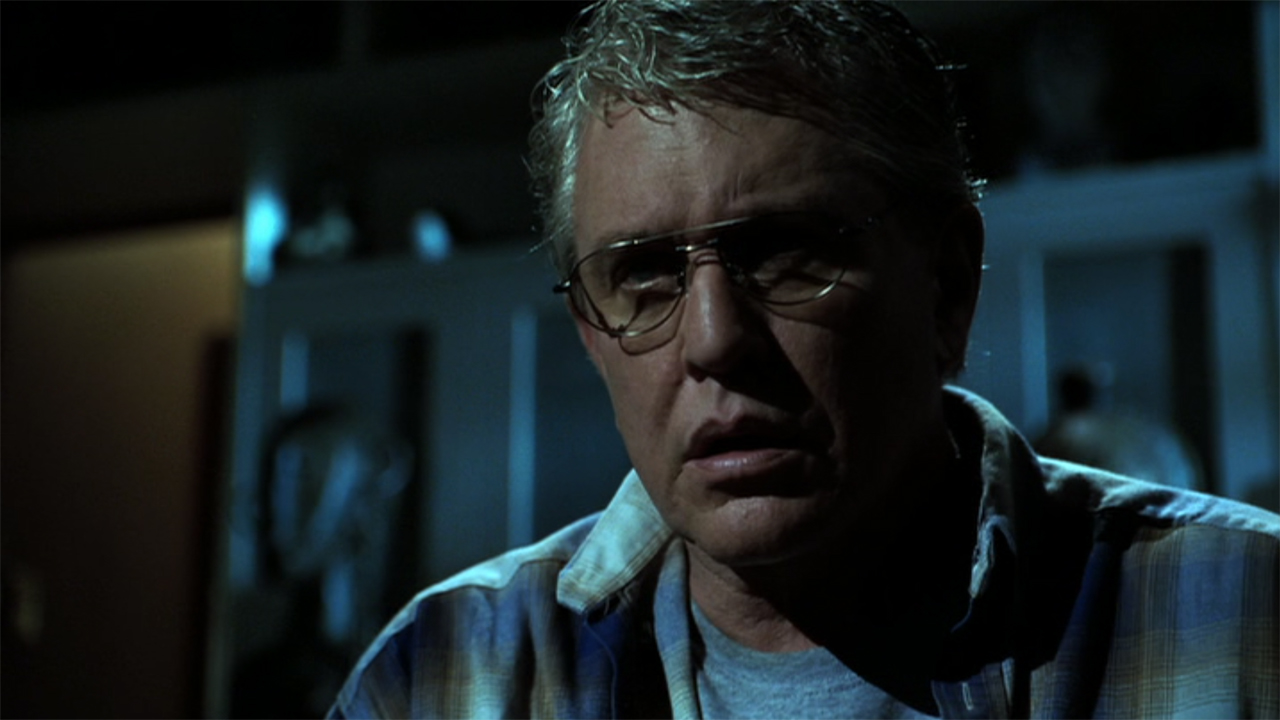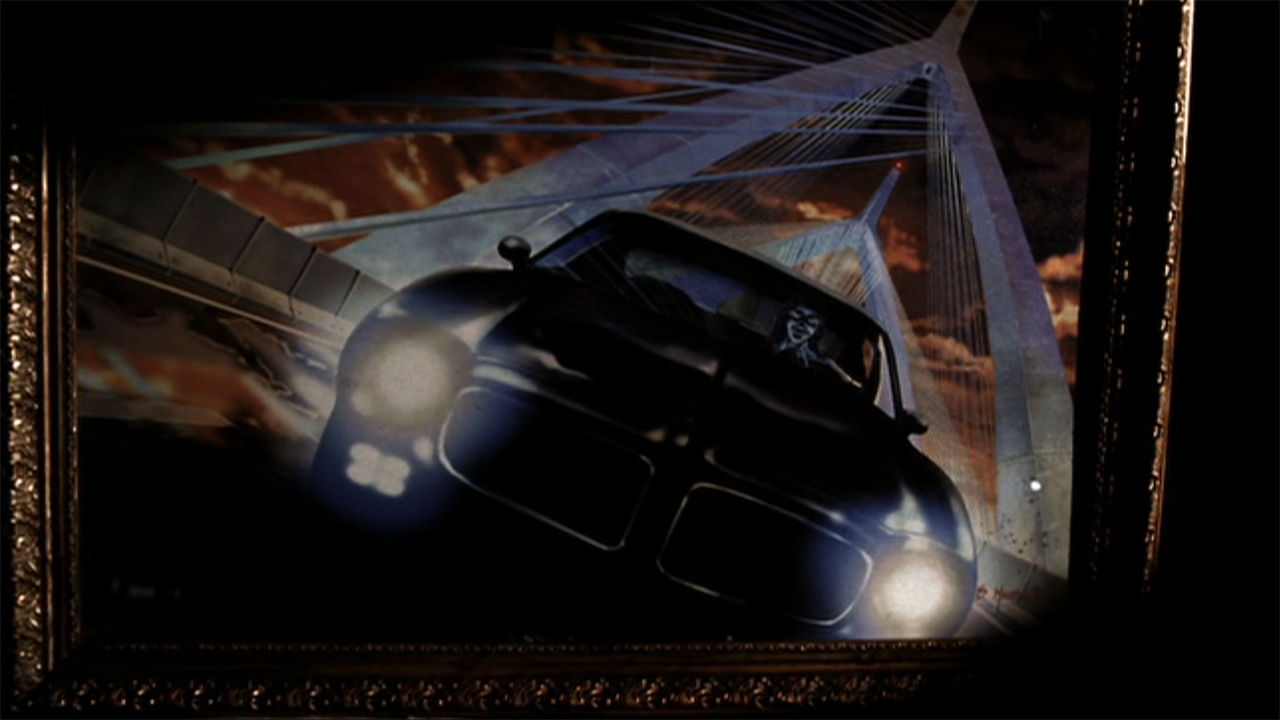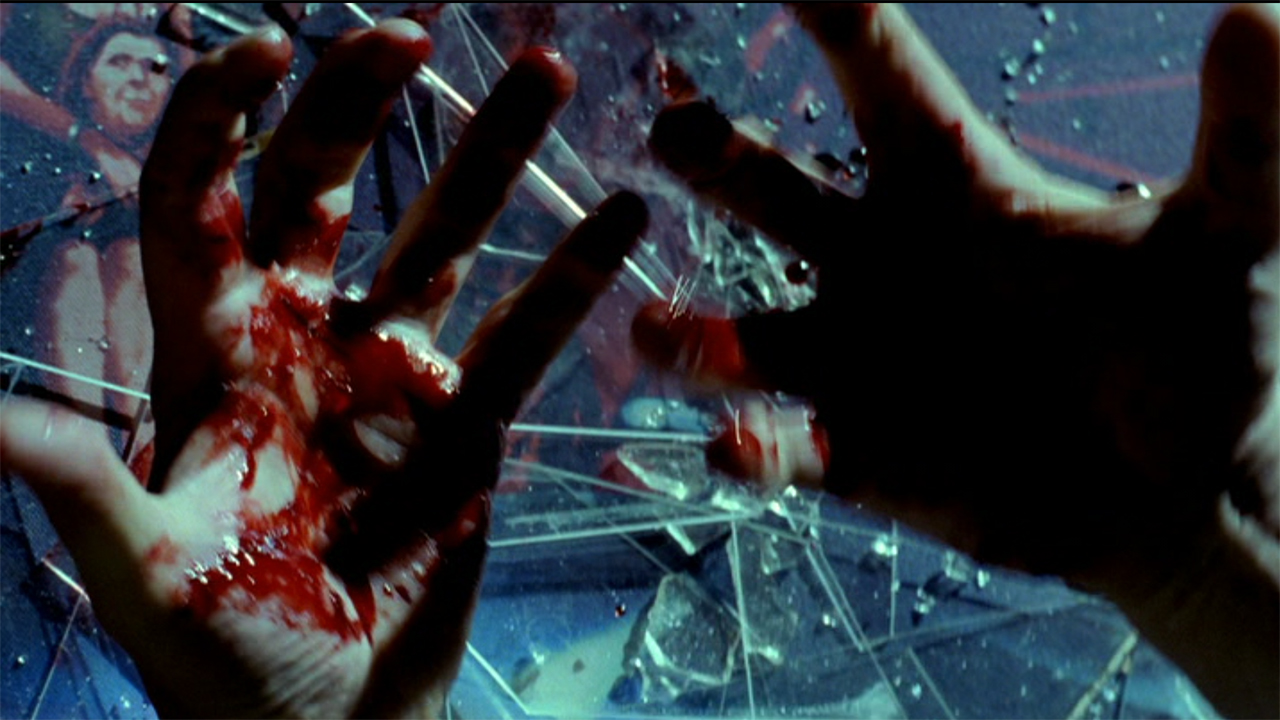Adapting Stephen King's The Road Virus Heads North: Nightmares & Dreamscapes' Fifth Episode Hits The Road With An Evil Painting
Starring Tom Berenger.

Much like sketch comedy shows, anthology series can be an entertainment gamble. While there may be a strong creative voice involved that's guiding the ship, there is typically unavoidable variation in quality that comes with separate teams of filmmakers developing their own parts of a larger whole. You see it in every iteration of The Twilight Zone and The Outer Limits, and Nightmares & Dreamscapes: From The Stories of Stephen King proved to be no exception.
Through its first two weeks on the air in July 2006 (with two-hour blocks in the programming schedule), the TNT original put its best foot forward by airing three of the show’s most stellar episodes… but also one of its worst. To kick off the third week, the call was made to have “Battleground,” “Crouch End,” “Umney’s Last Case,” and “The End Of The Whole Mess” followed by “The Road Virus Heads North” – and it unfortunately ended up dinging the series’ winning percentage in the quality department.
Based on the short story of the same name originally published in the multi-author anthology 999 (before later being collected in Stephen King’s Everything’s Eventual), “The Road Virus Heads North” is written by Peter Filardi (2004’s Salem’s Lot), directed by Sergio Mimica-Gezzan, and not an episode of Nightmares & Dreamscapes that anyone should hold up as being indicative of the show’s greatness. Why? Allow me to explain in this week’s Adapting Stephen King.

What “The Road Virus Heads North” Is About
As has been chronicled in this column, there is no one specific source for Stephen King’s ideas. One came from a midnight stroll around an empty hotel; another was spawned when he learned about the vast and complicated sewer system constructed beneath the city to which he had moved; and yet another coalesced from a dream about a woman with a pet pig.
The origin of “The Road Virus Heads North” is far less abstract than those examples. As noted in its introduction in 2002’s Everything’s Eventual, this short story about an evil painting was inspired by… and evil-looking painting. The artwork was given to Stephen King by his wife, Tabitha, as a present, and while he proudly hung it up in his office, it evidently was a source of the creeps to his three children. It decided to compose a narrative around its eerie-ness, and while doing so made it a piece that doesn’t have a static image. As he bluntly puts it,
I like stories about pictures that change, and finally I wrote this one about my picture.
Protagonist Richard Kinnell is a popular horror writer who starts the tale on the road back from a writers conference in Boston to his home in Derry, Maine, and after seeing a sign for a yard sale he decides to make a detour. Among all of the various belongings is a painting of a man with razor sharp teeth and long blonde hair driving a T-top sports car across the Tobin Bridge at sunset. The woman selling the framed canvas explains that the artist was a crack addict who burned all of his other artwork before hanging himself and leaving the note “I can't stand what's happening to me.”
Appreciating its dark vibes, Richard purchases the painting and continues to make his way north, making a stop at his aunt’s house. Unlike her nephew, she only sees horror and malevolence in his purchase, and she insists that he destroy it. His initial instinct is to laugh off her superstition, but his concern grows when he notices that elements of the painting are changing, and that concern turns into outright fear when he hears the news that the woman from the yard sale was murdered.
Your Daily Blend of Entertainment News
Believing that there is some kind of dark magic in the painting, Richard attempts to destroy it, but whether he tries to ditch it or burn it, he learns that defeating the evil within it is no evil task.

How Nightmares & Dreamscapes’ “The Road Virus Heads North” Differs From The Short Story
Of the first five episodes of Nightmares & Dreamscapes, “The Road Virus Heads North” is the one that deviates the most from its source material… though it does execute everything that is on the page. The core of the story is still Richard Kinnell (Tom Berenger) going from Boston to Derry with an evil painting as a passenger, but it adds a couple of stops to his journey and an original element to the story that has a big influence on the way one interprets the narrative.
The first of the two extra stops is right at the start of Richard’s trip, and it’s an appointment with a doctor (Chris Haywood) to get a colonoscopy. Afterwards, the physician is reluctant to make any diagnosis, but he makes it clear that the author is going to receive a clean bill of health when the test results come back.
Richard is haunted by the lack of clarity in this vague bad news as he drives to Maine, and he wonders if his experiences with the painting and the Road Virus (Hamish Michael) are an extension of his mind registering impending doom. Spoiler alert: they’re not.
The other new detour the protagonist is included after his visit with his aunt (Marsha Mason) and sees him visit his ex-wife, Sally (Susie Porter) – who has been taking care of his dog, Hobo, while he has been away. Her job isn’t specifically defined, but she seems to be some kind of spiritual healer, and she provides Richard with a “healing” before he goes to Derry, and induces a nightmare of him breaking apart shards of picture frame glass with his bare, bloody hands.
There are other small changes along the way, like the Road Virus’ tattoo in the painting being changed to “Luck of the Irish” instead of “Death Before Dishonor,” and the Tobin Bridge being swapped for the Zakim Bridge.
The end of the episode is ultimately the same as the short story, but the adaptation definitely expands on the source material. As originally written by Stephen King, Richard acquiesces to fate when the car in the painting arrives at his house, and the shifting artwork shows him the driver’s seat covered in blood.
Peter Filardi’s teleplay gets there eventually, but first the Road Virus kills Hobo and chases Richard through his house. Trying to get away, the writer runs down a hallway and trips on a pile of Stephen King books, sending him hurtling down the stairs. It’s only as he lies bleeding in the foyer of his house and sees the driver gesturing to the car that he says, “I’m going outside, I think.”

Is It Worthy Of The King?
In Everything’s Eventual, Stephen King cites the novel Rose Madder as being another story he wrote featuring a painting with moving imagery, but I’d argue that “The Road Virus Heads North” has a closer connection to “The Sun Dog,” the novella featured in 1990’s Four Past Midnight. In that terrifying Castle Rock tale, a magical Polaroid camera only produces photographs of the same dog, and the evil canine seems to be getting closer and closer in every shot.
“The Road Virus Heads North” feels like an attempt by the author to capture that same growing tension, as the Road Virus’ car is seen driving through the same locations Richard passed through on his way to Maine, but it’s not particularly successful.
The adaptation for Nightmares & Dreamscapes doesn’t help any of these issues, and none of the original material does anything to help. Instead, it all feels like filler designed to get the story to the necessary 45-minute runtime.
One thing that very much hurts the translation is the inability for the episode to deliver a painting that actually feels or looks scary. The artwork that is featured may very well be the exact piece that Tabitha King bought for her husband, but it doesn’t in any way deliver the macabre aura that is required of it, even if it did manage to freak out the author’s kids. It’s just a painting… and not a particularly good one. It certainly can’t compete with what is created in a reader’s imagination when absorbing the short story on the page.
Also notably lacking when compared to the previous Nightmares & Dreamscapes is a defined sense of style of specific aesthetic choice. Both “Crouch End” and “Umney’s Last Case” are pastiche stories inspired by H.P. Lovecraft and Raymond Chandler; “The End Of The Whole Mess” is translated from journal entry to documentary; and “Battleground” is executed entirely without dialogue. “The Road Virus Heads North” doesn’t have any kind of extra flair to it, and is the most blah episode that the anthology offers.
Reflecting that, I would call it the worst episode of Nightmares & Dreamscapes in my ranking, putting it in eighth place behind “Crouch End.” It’s not in the league of awful adaptations like Riding The Bullet or Graveyard Shift, but there’s a high standard set in judging the TNT original series.

How To Watch Nightmares & Dreamscapes’ “The Road Virus Heads North”
Streaming services regularly add new movies and shows to their libraries at the start of each month, and this column is being published in the early days of May 2022, but I have bad news: the digital status of Nightmares & Dreamscapes: From The Stories of Stephen King has not changed. The show is not available in HD, and is neither on any subscription service, nor available to rent or purchase from online retailers. The only legal way to watch the terrific anthology series is by purchasing the widely available three-disc DVD set – a must-have for every Stephen King collection.
“The Road Virus Heads North” was followed by “The Fifth Quarter” starring Jeremy Sisto, Samantha Mathis, and Christopher Kirby when it debuted in July 2006, so that’s where the spotlight will go for next week’s Adapting Stephen King – which will be here in the CinemaBlend TV section next Wednesday. In the meantime, you can explore all of the previous installments of this column by clicking through the banners below.







Eric Eisenberg is the Assistant Managing Editor at CinemaBlend. After graduating Boston University and earning a bachelor’s degree in journalism, he took a part-time job as a staff writer for CinemaBlend, and after six months was offered the opportunity to move to Los Angeles and take on a newly created West Coast Editor position. Over a decade later, he's continuing to advance his interests and expertise. In addition to conducting filmmaker interviews and contributing to the news and feature content of the site, Eric also oversees the Movie Reviews section, writes the the weekend box office report (published Sundays), and is the site's resident Stephen King expert. He has two King-related columns.
